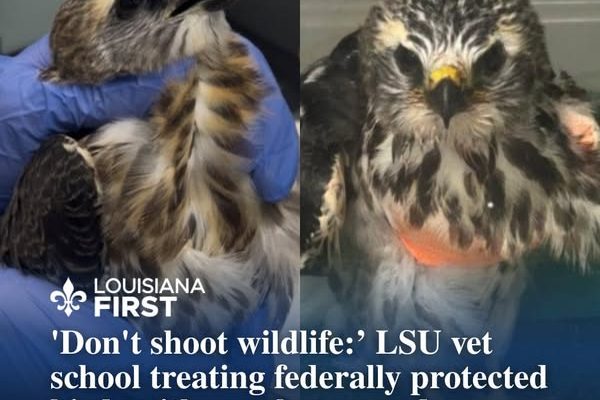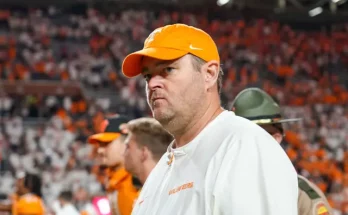Alarming Surge: LSU Wildlife Hospital Treats Nearly Twice as Many Gunshot Wounded Mississippi Kites in 2025 Compared to Last Year
The LSU School of Veterinary Medicine Wildlife Hospital has reported a disturbing rise in the number of Mississippi kites admitted with gunshot wounds in 2025, nearly doubling the cases seen in 2024. This alarming trend sheds light on a growing threat to this majestic raptor species, raising concerns among wildlife experts, conservationists, and the broader community about the safety of Mississippi kites and the broader implications for wildlife protection in the region.
Mississippi kites, known for their graceful flight and striking plumage, have long been admired across Louisiana and the southern United States. These birds of prey play a vital role in local ecosystems, helping control populations of insects and small animals. However, the sharp increase in gunshot injuries reported this year has put a spotlight on the dangers they face from human activities, particularly illegal shootings.
The LSU Wildlife Hospital, renowned for its expertise in treating injured wildlife, has been on the front lines of this crisis. Their veterinary team has worked tirelessly to provide emergency care, surgeries, and rehabilitation for the growing number of kites brought in with life-threatening wounds. The hospital’s resources and staff have been stretched thin as they strive to save these birds and return them to the wild.
Veterinarians at the hospital note that gunshot injuries to wildlife are particularly challenging to treat due to the severity of tissue damage, risk of infection, and the delicate nature of avian physiology. Many of the Mississippi kites arrive with shattered bones, internal injuries, or embedded pellets that require complex surgical interventions. Despite the hospital’s best efforts, not all injured birds survive, underscoring the urgency of addressing the root causes of these injuries.
The doubling of gunshot cases in just one year signals a troubling increase in intentional harm or reckless behavior toward wildlife. Conservationists fear that this pattern may reflect broader issues such as insufficient enforcement of wildlife protection laws, increased human-wildlife conflicts, or even a rise in targeted shootings of protected species.
Wildlife experts emphasize the importance of education and awareness in combating this trend. Many incidents of gunshot injuries may result from ignorance or misunderstanding of wildlife laws and the ecological importance of species like the Mississippi kite. Programs aimed at promoting coexistence, responsible hunting practices, and the protection of raptors are critical to reversing the tide.
The LSU Wildlife Hospital has called on state and federal agencies to enhance efforts in monitoring and enforcing regulations that safeguard wildlife from illegal shootings. Increased patrols, stricter penalties, and community engagement are among the strategies proposed to deter harmful behaviors and protect vulnerable species.
In addition to enforcement, habitat preservation plays a key role in reducing conflicts that sometimes lead to violence against wildlife. Mississippi kites depend on healthy ecosystems for nesting and hunting, and habitat loss or fragmentation can increase their exposure to dangerous situations. Conservation groups are working alongside the LSU AgCenter and other stakeholders to promote habitat restoration and protection initiatives across the region.
The hospital’s data on gunshot injuries also serves as an important indicator of broader environmental health. Birds of prey are often considered sentinel species, meaning their wellbeing reflects the state of the environment at large. The rise in gunshot wounds may point to larger challenges in human-wildlife interactions that need urgent attention.
Community involvement has proven essential in addressing wildlife injuries. Local citizens who spot injured birds are encouraged to contact wildlife rehabilitation centers promptly, ensuring timely treatment and increasing the chances of survival. Public support for rehabilitation efforts, funding, and volunteer programs helps facilities like LSU’s Wildlife Hospital continue their vital work.
The increase in gunshot wound cases among Mississippi kites has also sparked discussions about the need for improved data collection and research. Understanding the patterns and causes behind these injuries can inform more effective prevention strategies. LSU researchers are collaborating with wildlife agencies to study the incidence and impact of gunshot injuries on kite populations, aiming to develop targeted interventions.
This surge in cases is not isolated to Mississippi kites alone; other raptor species and wildlife in the region have shown signs of increased human-induced injuries. The pattern highlights a broader conservation challenge that requires coordinated action from government agencies, conservationists, researchers, and the public.
Despite the challenges, the LSU School of Veterinary Medicine Wildlife Hospital remains committed to its mission of providing compassionate and expert care to injured wildlife. Their work not only saves individual animals but also contributes to preserving biodiversity and maintaining ecological balance in Louisiana.
The hospital’s veterinarians and staff continue to advocate for stronger protections and community education to prevent further harm to Mississippi kites and other vulnerable wildlife. They urge the public to appreciate the beauty and ecological role of these birds and to report any illegal activities that threaten their survival.
As the 2025 season progresses, the Wildlife Hospital remains vigilant, preparing to treat any further cases and working to raise awareness about this urgent conservation issue. The doubling of gunshot wounds is a stark reminder that wildlife protection is an ongoing responsibility requiring the combined efforts of all who care about Louisiana’s natural heritage.
Ultimately, the increase in gunshot injuries to Mississippi kites challenges society to reflect on its relationship with nature. It calls for renewed commitment to coexistence, respect for wildlife, and actions that ensure these magnificent birds continue to soar across Louisiana skies for generations to come.



